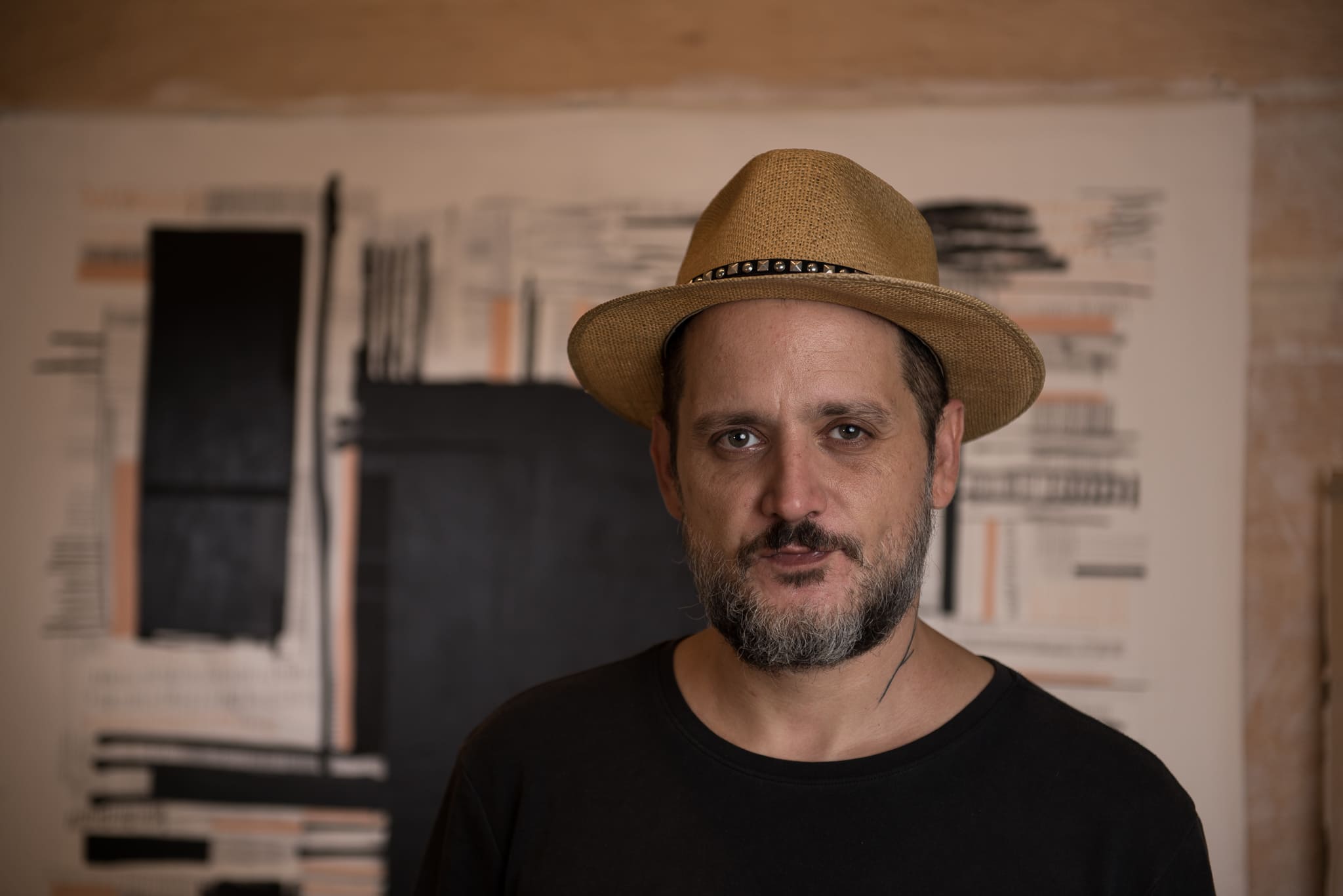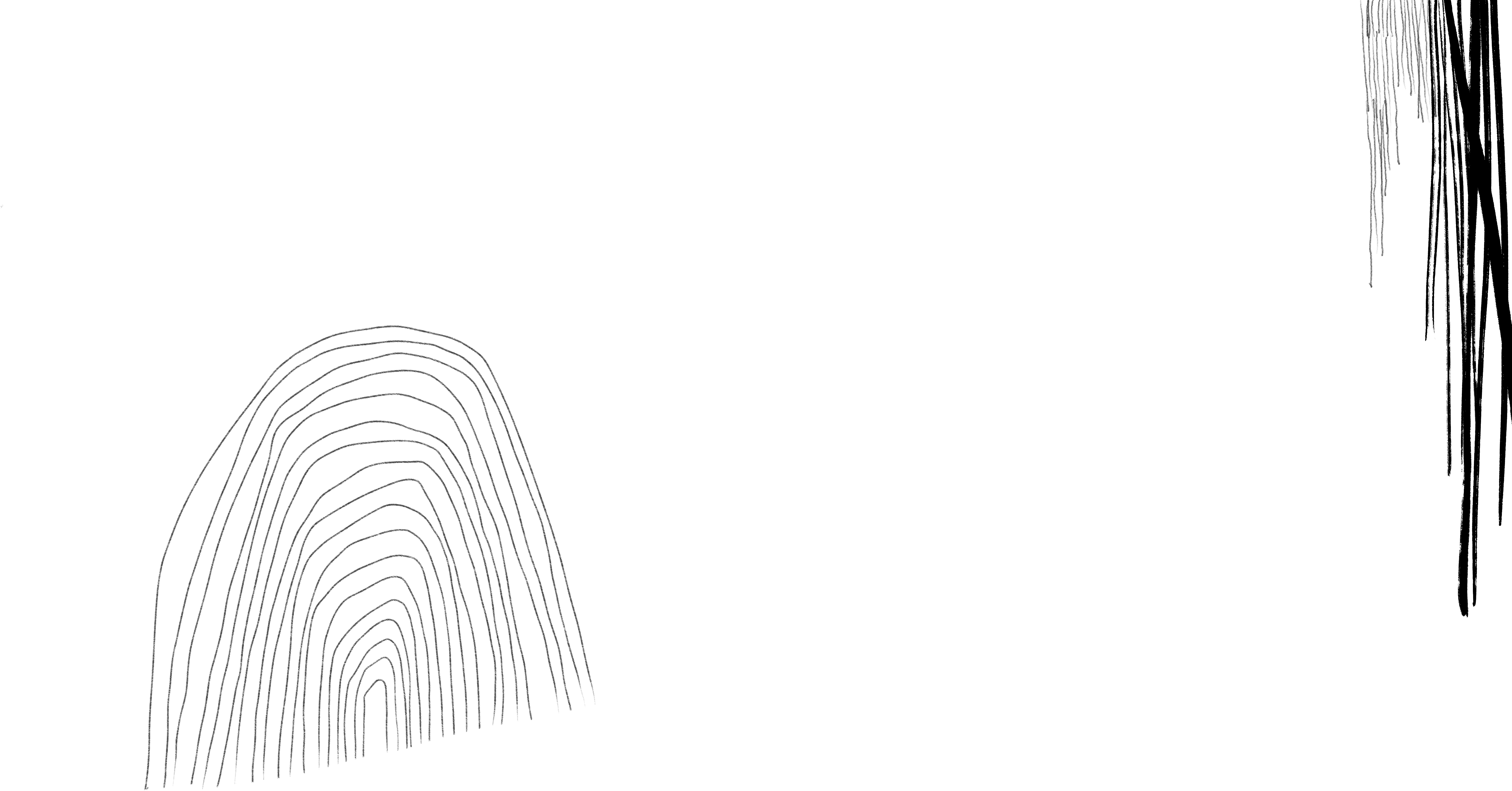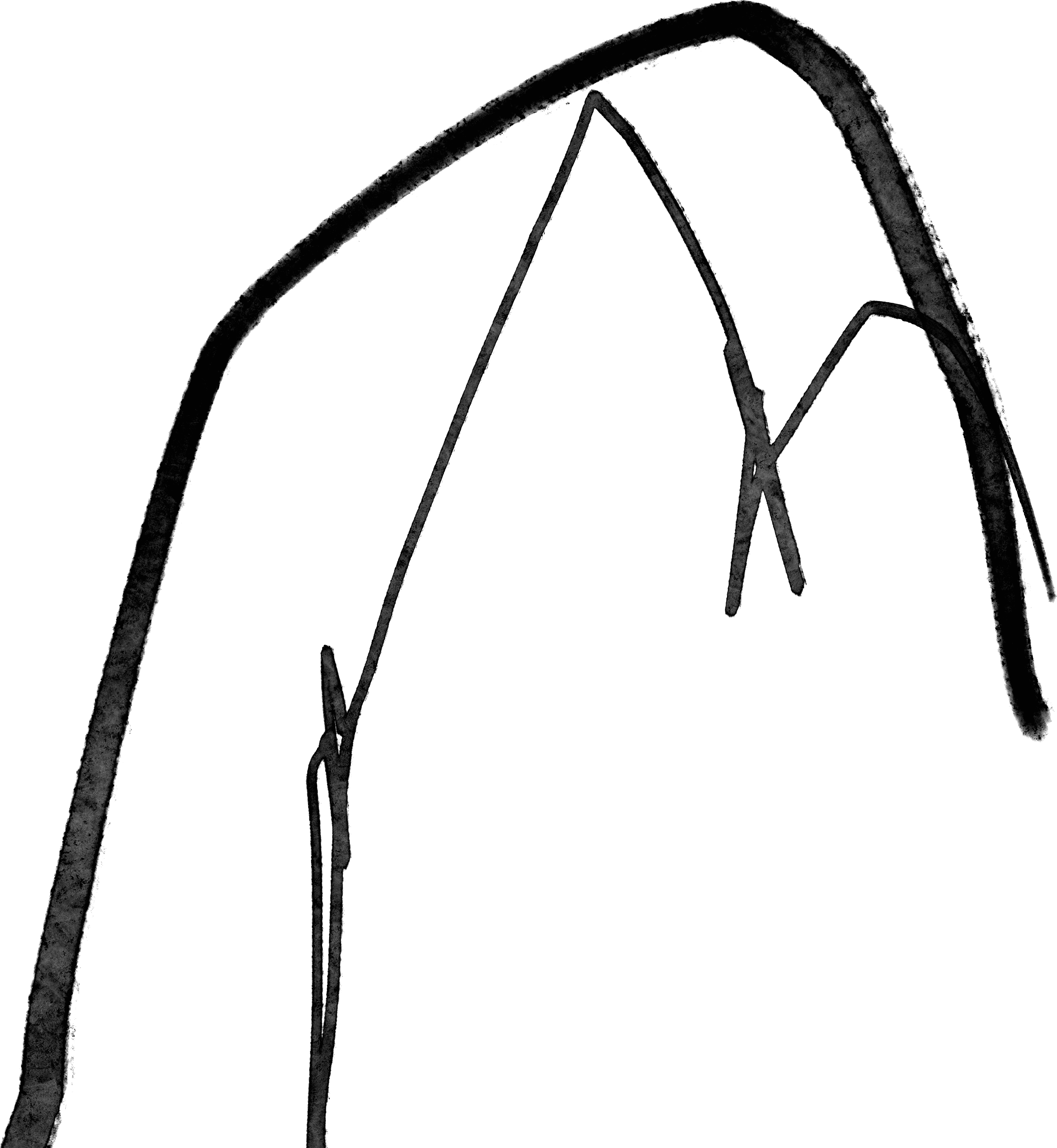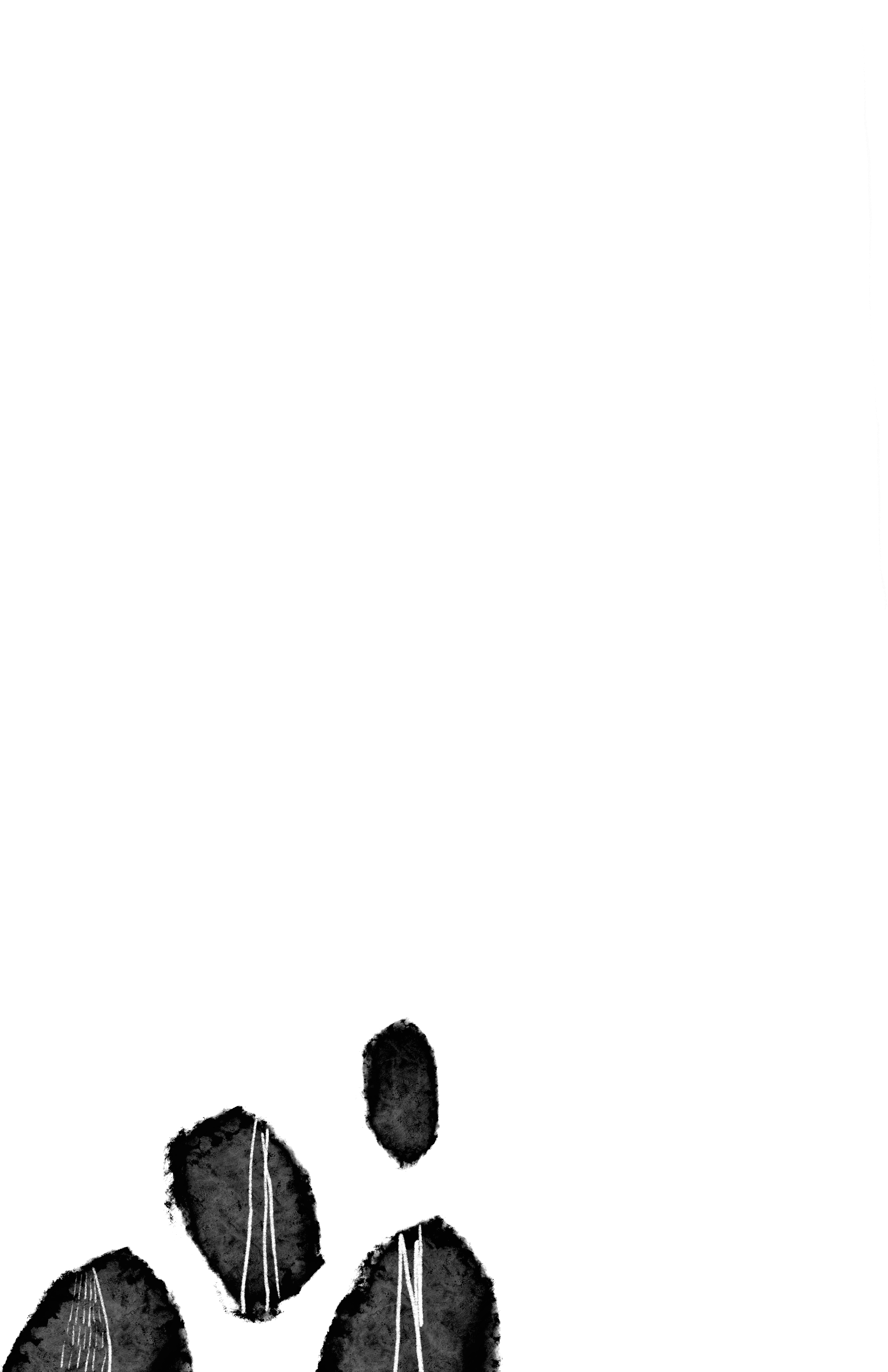
Mateus Dutra is a self-taught artist from Lavras, Minas Gerais, who has lived in Goiânia for the past 40 years. Part of his family roots lie in the historic city of Goiás, and his work emerges from this intimate Cerrado—a vast and layered interior landscape that spans both states. Here, the Cerrado is not only a geographical setting but also a conceptual and affective territory: particular and intrinsic.
His public career began behind the scenes of the performing arts. With over a decade of experience as a set technician for the acclaimed Quasar dance company and as a stage director, Dutra cultivated a sharp awareness of mise-en-scène—how space is structured and activated. This foundational experience informs his artistic approach today, visible in interpretive layers, compositional ruptures, and an embrace of mistakes, detours, and transitions across media and scale. From Namibia to São Paulo, through solo and group exhibitions, Dutra marks more than two decades within the contemporary art landscape.
At the core of his creative practice is a deeply rooted logic of montage: to assemble, disassemble, and reassemble layers in a state of constant transformation. Rather than predefining shifts in scale and material, he allows these transitions to emerge organically, through the gestural risk of making. The “elbow”—a metaphor employed by writer Hugo de Carvalho Ramos to describe the folds in the Cerrado’s vast plateaus, where things vanish yet remain—becomes a symbolic device for understanding Dutra’s trajectory.
The density and subtlety of his marks, interspersed with open spaces in his recent pictorial work, suggest a disappearance of the grand, illustrative figures that once populated our imaginary. In their place arises a return to the primal trace—an initial gesture rooted in childhood and shaped by early experiences with the interior landscapes of Brazil, reminiscent of the poetic ballads of Elomar (which the artist compares to prayer). His connection to this biome is profound and enduring.
Thus, the Cerrado acts as an inflection point in Dutra’s recent work. The more he distances himself from the overt and recognizable elements of his earlier practice, the closer he draws to its origin. What emerges is a compositional vision of the organic—images that surface from memory, intuition, and ancestral connection.
This return becomes the key to understanding his current language: a recursive fold through which he revisits lived stories, seeking the future within his own history. Whether as a guide to ancient rock paintings in Serranópolis or through spiritual experience, Dutra’s work is illuminated by multiple sources. His materials—chiefly charcoal and earthy pigments—seek a return to the ground, to their point of origin. Hence, the image of the root appears again and again as a dominant motif in his practice.
His most striking gestures remain within the realm of the sketch, the scribble, the deliberately unfinished. Yet these also become a kind of grounding—mirroring the artist’s own meanderings across the veins of the hinterland, captured in forms such as roots, leaves, Saint George’s swords, or hanging vines from fig trees. His constant experimentation—from graphite to industrial paint—results in layers of imagery that, while abstract, resemble the stunted growth of Cerrado flora, rendered in a multiplicity of repeated lines.
In this sense, the monumental horizon of the Cerrado paradoxically miniaturizes the images that arise from his drawing—distance turns things into smallness, into other formats. Dutra’s artistic journey maps the surrounding Cerrado, where, as Hugo de Carvalho Ramos also notes, one finds both plants useful to the caboclo—for their bark, leaves, and wood—and the countless “pau-à-toa,” trees of uncertain purpose. His sertão begins in the sacredness of gesture, in the mystery of affect, and in the remote corners of memory, where the bond is—and has always been—ancestral: the connection of the subject to land, to people, to story.
Mateus Dutra has become a kind of raizeiro of “pau-à-toa.” Whether or not we know exactly what healing he seeks through these endlessly repeated roots, we do know this: their drawing produces uninterrupted movement—a search that never ceases.
Exposição Metáfora
Galeria Marcos Caiado – Goiânia, GO (2009) – Solo
Mateus Dutra / Studio SeventySeven
Windhoek, Namíbia (2010) – Solo
Tinta Pele Preta
Objeto Encontrado – Brasília, DF (2012) – Solo
Blackbook
Galeria Potrich – Goiânia, GO (2012) – Group show
Confluir
Verve Galeria – São Paulo, SP (2014) – Group show
Blackbook – Artistic Director
Série de exposições realizadas durante o Festival Bananada – Goiânia, GO (2014, 2015, 2016, 2017, 2018)
Sexpo – Artistic Director
Galeria Blackbook – Goiânia, GO (2017) – Group show
Renka
Galeria Crua – São Paulo, SP (2018) – Solo
Suíte para Seis Instrumentos Visuais
Cerrado Galeria – Goiânia, GO (agosto de 2023) – Solo
Renka: Individualidades Simultâneas
Grande Sala Vila Cultural Cora Coralina – Goiânia, GO (outubro de 2023) – Solo
Natureza Urbana
CCBB – Brasília, DF (agosto de 2024) – Group show



